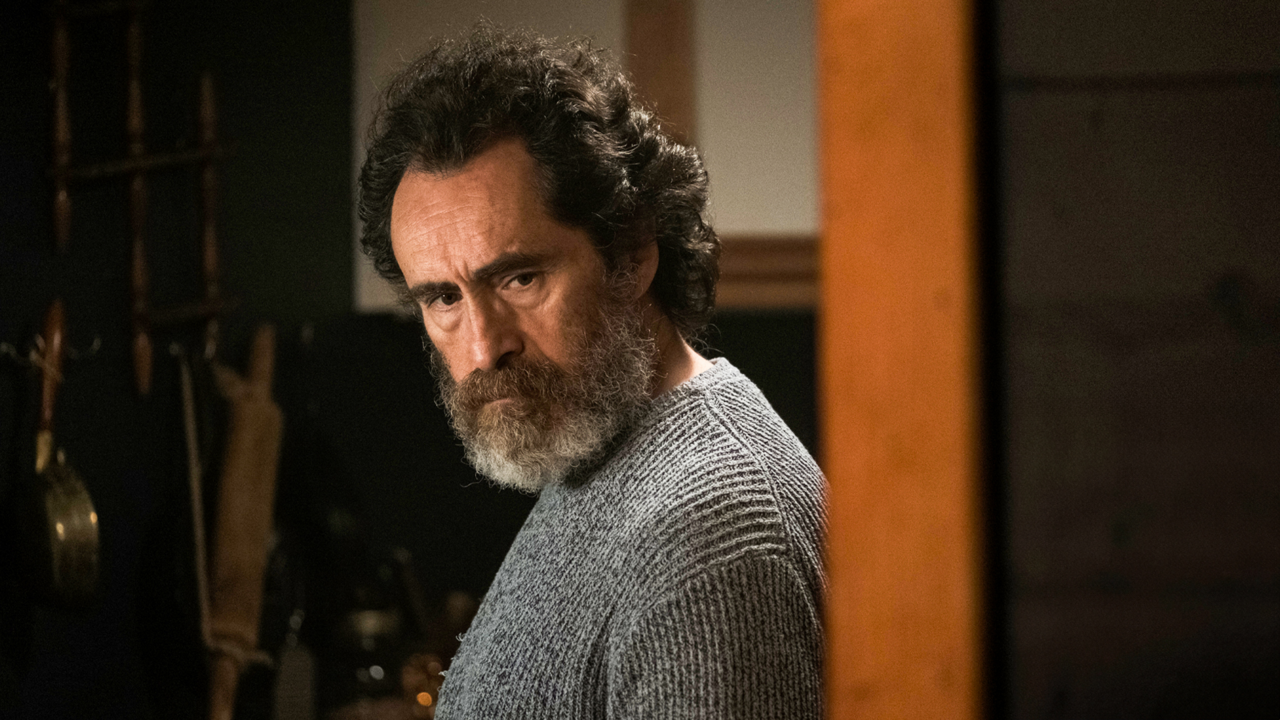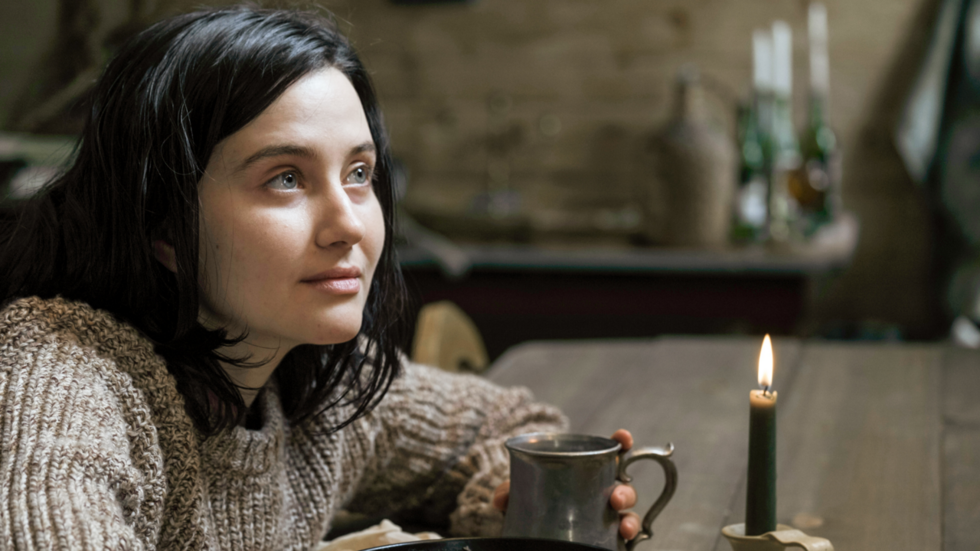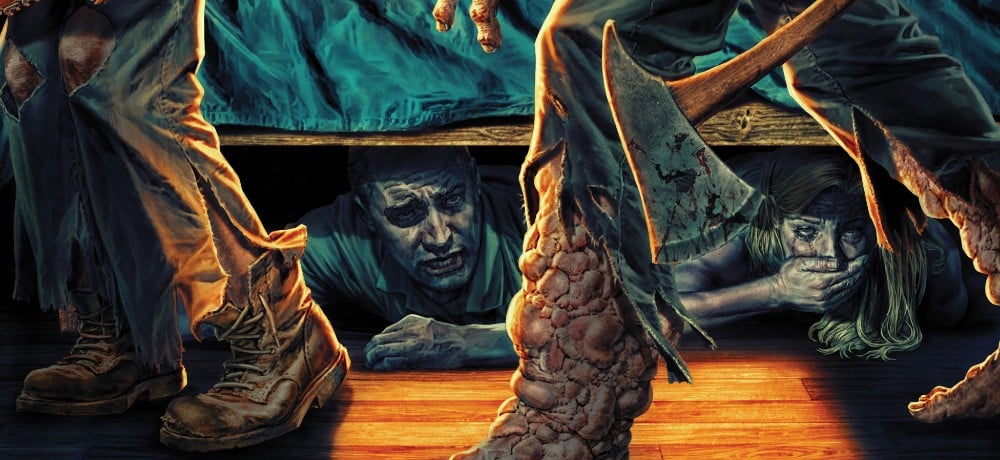The Cast of ‘Beacon’ Discuss the Tribeca Fest Must-See [Interview]
![The Cast of ‘Beacon’ Discuss the Tribeca Fest Must-See [Interview] The Cast of ‘Beacon’ Discuss the Tribeca Fest Must-See [Interview]](https://www.dreadcentral.com/wp-content/uploads/2024/06/beacon.png)
As the 2024 Tribeca Film Festival revs up to take over NYC with a wealth of capital C cinema, we’re here scouting out the spookiest hidden gems the fest has to offer. One of the titles that should be highlighted in bright yellow on your agenda is Beacon, a psychological horror-drama two-hander that’ll provide genre fans with a stylish and stormy meal to chew on.
Directed by the talented Roxy Shih, Beacon is a one-of-a-kind paranoid thriller focused squarely on two characters trapped together at a remote lighthouse near absolutely nowhere. A story of survival, fear, and gothic folklore, this mystery will likely keep audiences guessing until the final moments.
This title stars the seasoned performer Demián Bichir as Ismael, a lighthouse keeper at the end of the world. You’ll likely remember Bichir from his turns in Quentin Tarantino’s The Hateful Eight, and more recently, the undersung Let the Right One In series adaptation.

Joining Bichir is rising talent Julia Goldani Telles, a striking performer who is just so easy to root for. Telles stars in a similarly brooding horror film The Wind, which premiered at the Toronto International Film Festival in 2018. This talented cast joins me to discuss their unique seaside thriller ahead of its Tribeca premiere.
In the film, driven by an overzealous sense of adventure, young sailor Emily (Julia Goldani Telles), quickly runs into trouble when she shipwrecks on a remote island off the coast of South America. She’s rescued by the island’s lone inhabitant, Demián Bichir’s mysterious light keeper, Ismael. With communications down due to incredibly stormy conditions, they try to work together to ensure each other’s survival, but tension grows once Emily begins to question Ismael’s lack of answers and the bizarre occurrences they encounter as time passes.
Check out my conversation with the cast of Beacon below.

Dread Central: How do you describe this film to someone totally unfamiliar with it?
Julia Goldani Telles: It’s written almost like a play. It’s only two characters, and they’re stranded in a location in the middle of a storm. It’s a trust exercise between these two people. And it’s about projection and misinterpretation and survival…
Demián Bichir: They have so much in common. The love for the sea, for example, and the love for adventure. And I think part of the beauty of the story relies precisely on how two different human beings can actually share the same space, whether it’s an emergency or just a choice. And as Julia says, yes, it is a trust exercise. And whoever doubts more might be losing the game.
DC: I understand you guys were filming in Newfoundland. How remote was the shoot?
JGT: Well, first of all, Newfoundland is beautiful. We were shooting on a very small stretch of land with a defunct lighthouse at the center that was epically set-dressed by our art department to look like an old lighthouse keeper’s cabin. There was a glacier when we were shooting there. It’s surrounded by rocks. It’s just so cinematic. It’s a character in the movie. The winds are howling so much that sometimes we couldn’t shoot because the wind was too dangerous. That also really affected the way that I got into character.
DC: What were some of the other challenges of filming out there?
DB: We had challenges from day one when it took us four days for us just to arrive in Newfoundland. And this is the end of Canada, the end of that segment of Canada. If you look a little bit north from your window, you see Greenland and polar bears. Seeing my first iceberg … that was beautiful. But it was definitely challenging in every way. At the place where we are staying, we’d run out of water. And many different natural elements kept adding to the adventure. I like to take it all in and use it for the story. And for my character.
DC: Was it the most remote place you’ve ever been?
JGT: I’m kind of an indoor cat, so I can’t say I’m physically very adventurous. This was definitely a physical challenge for me. In terms of isolation, this was pretty out there. It was a different kind of isolation. I grew up going to my family’s farm in the south of Brazil, a state which is unfortunately 75% underwater right now. They’ve had horrible floods. But you take a plane to port, which is the airport, and then you take a car to this little town and then you take another car to a tinier town. And it was just a ranch. And I have some of my best childhood memories there.
DB: I’m a tropical fish and not great with cold, so when I did The Hateful Eight with Tarantino, that was crazy. We had a cabin in the middle of the Rocky Mountains up in the highest point. That was my record in terms of dealing with cold. That’s what made it so difficult. But it’s still a controlled chaos; everything is in place, and you have everything you need to function properly.
DC: Was there a rehearsal period for Beacon?
JGT: I don’t think we had a rehearsal period unless…
DB: No, not much.
JGT: Like a couple read-throughs on Zoom. It was just a flying-by-the-seat-of-your-pants situation, throwing stuff against the wall and seeing what sticks. It was definitely an acting exercise. It was a great challenge, you didn’t have time to be worried that you were going to be bad. You just had to be like, all right, I’m going to try something here. We didn’t have a lot of time; we had to use it very wisely to create.
DB: That part of the process was perfect for the story. It was something that we used to our own advantage because the characters do not know each other. So we don’t need to know each other. And I didn’t know Julia before this film, so it was perfect because we pretty much, at least 90% of the film, we’re able to shoot it chronologically. That also helped us build the emotions and the different states that the characters went through. We were discovering each other the same way. Emily and Ismael were learning about each other every moment, every day, every scene. We pretty much played it as the script was written. And I think that helped our own dynamic to portray the characters organically. And it worked. I’m very, very happy with this film. I’m very, very proud of what we achieved.
DC: What is your personal relationship with horror, or the gothic genre?
DB: I didn’t grow up with the genre, so sometimes horror films can make me laugh, and I don’t know why exactly. But they are a lot of fun to make. I’ve done a few horror shows, and two horror films, and it was just way too much fun doing them.
DC: Your Let the Right One In series was beautiful.
DB: Absolutely! And we loved doing that series so much. We enjoyed every single part of it. And now with this film, I think it’s more of a psychological-horror type of thriller. There are many horrific aspects in the film that the characters go through that could spook you easily.
JGT: Well, I was freaked out by everything growing up. My best friend in the seventh grade was trying to get me into the Saw franchise… She also made me watch The Sixth Sense, and I just couldn’t handle it. I think when I started acting and being in scary movies, that helped me understand how the sauce was made. So now they scare me less. But I have enjoyed some scary psychological thrillers. The first psychological thriller I ever really enjoyed was Martha, Marcy, May Marlene.

Beacon has its world premiere this weekend at the 2024 Tribeca Film Festival. The first screening is on Saturday, June 8th, at 8 PM at Village East by Angelika. Check out the film’s festival page for information on all screenings.
Lastly, are you as excited about Beacon as we are? If you’re as into gloomy lighthouse horror as I am, then drop us a line on Twitter via @DreadCentral. We’re always around to chat about all things Tribeca Fest horror.
Categorized:Interviews News


![Florida Walmart Serial Flasher Apprehended [Horror IRL] Florida Walmart Serial Flasher Apprehended [Horror IRL]](https://www.dreadcentral.com/wp-content/uploads/2024/07/Walmart.jpg)

![Writers Talk Crafting New Tales in EC Comics Tradition [Exclusive] Writers Talk Crafting New Tales in EC Comics Tradition [Exclusive]](https://wickedhorror.com/wp-content/uploads/2024/07/EC-EPITAPHS_001_COVER-B_SORRENTINO.jpg)
